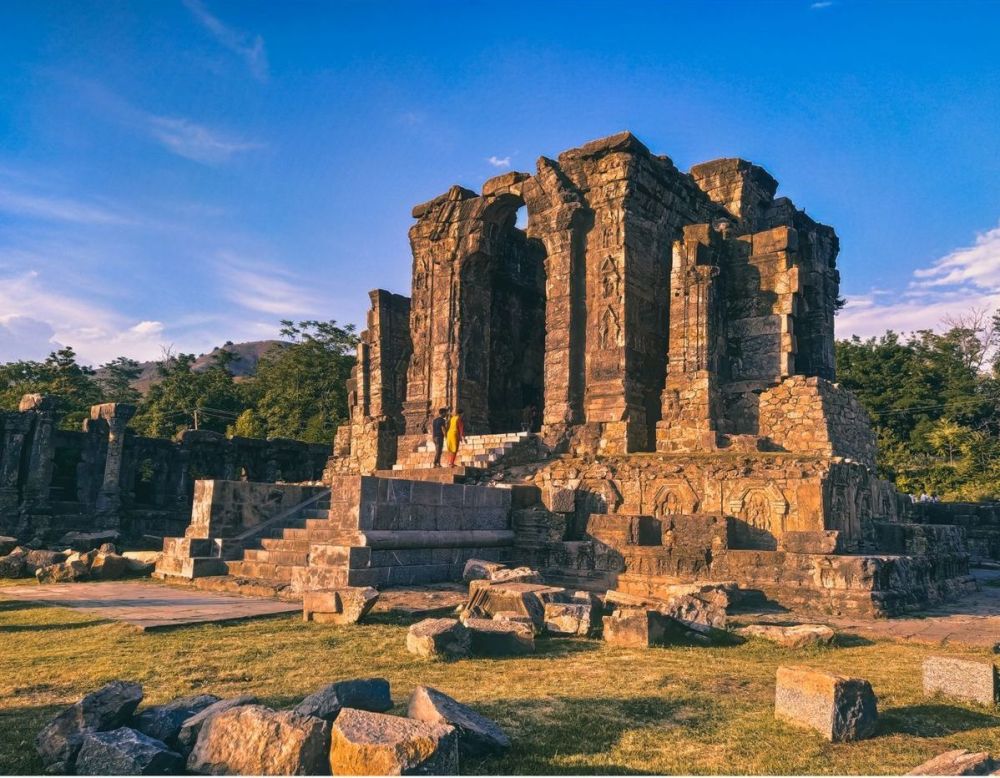

The Martand Sun Temple, located near Pahalgam in the picturesque region of Kashmir, India, is a remarkable example of ancient architecture and cultural heritage. The temple is dedicated to the solar deity Surya and was constructed during the 8th century CE by the third ruler of the Karkota Dynasty, Lalitaditya Muktapida. Its unique blend of Gandharan, Gupta, Chinese, Roman, and Greek architecture and art showcases the cosmopolitan vision of its creators.
The grandeur of the Martand Sun Temple attracted travelers and pilgrims through the centuries, with its zenith of tourist draw occurring during the 8th to the 12th centuries. As a center of learning and a place of worship, it played a significant role in the intellectual and spiritual development of the region. However, the temple faced decline and destruction in the 15th century and was further damaged by the Sikh Empire in the 19th century. Despite its ruined state, the site has been a muse for poets, historians, and travelers, standing as an impressive relic of Kashmir's glorious past.
In contemporary times, with Kashmir's increasing stability and popularity as a tourist destination, the Martand Sun Temple has seen revived interest. Visitors come from across the world to witness the archaeological brilliance of the temple ruins, soak in the mesmerizing vistas of the Kashmir Valley, and delve into the region's rich history. The tourism influx has been nurtured by efforts to preserve the site and promote sustainable tourism that respects the culture and environment of Kashmir.
Eco-Tourism: The latest trend in the area is eco-tourism. Tourists are now more interested in sustainability and experiencing the natural beauty of Kashmir without causing harm to the environment. Efforts are being made to offer accommodations and activities that are eco-friendly and respectful to the local culture and heritage.
Adventure Tourism: Pahalgam, the gateway to the Martand Sun Temple, is also emerging as a hub for adventure tourism. Activities such as trekking, river rafting, and mountain biking are attracting a new demographic of travelers seeking both the adrenaline rush and the cultural exploration.
Cultural Festivals: To celebrate and keep alive the region's traditions, local festivals and events are being promoted to tourists. This provides a more immersive experience and a deeper understanding of the region's heritage, drawing cultural enthusiasts to the Martand Sun Temple and its surroundings.
Digital Presence: With an increase in digital savvy tourists, the archaeological department and tourism boards are improving their online presence, offering virtual tours and detailed historical content about the Martand Sun Temple and other attractions in Kashmir.
In conclusion, while the Martand Sun Temple in Pahalgam remains a shadow of its former glory, it continues to magnetize and mystify visitors with its historical significance and architectural marvel. The blend of ancient heritage and modern tourism trends ensures that the temple will remain a cherished destination for generations to come.